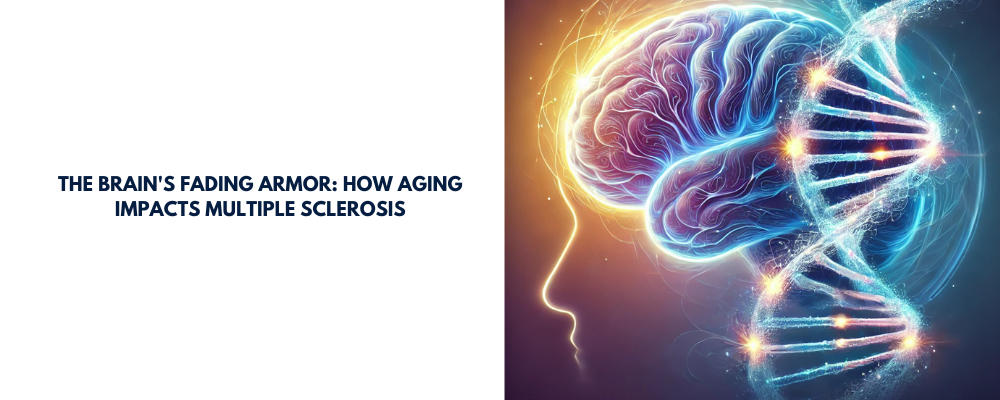The Brain's Fading Armor: How Aging Impacts Multiple Sclerosis

Multiple sclerosis (MS) is a complex immune-mediated neurodegenerative disease that messes with your brain and spinal cord. It's like a relentless invader, causing damage to the protective layer around your nerve fibers, called myelin. Think of myelin like the insulation around an electrical wire; when it's damaged, signals don't travel as well, which leads to all sorts of problems. While we know autoimmunity plays a role in MS, this blog post explores the complex relationship between MS and aging, drawing from a detailed scientific article.
Understanding MS: A Quick Recap
* MS is a chronic inflammatory disease of the central nervous system.
* It involves demyelination (loss of myelin) and neurodegeneration (damage to nerve cells).
* The disease course varies greatly. Most people initially have a relapsing-remitting form (RRMS) with episodes of dysfunction followed by recovery.
* Many individuals with RRMS eventually transition to a secondary progressive form (SPMS) with increasing disability and fewer relapses.
* Some individuals experience a primary progressive form (PPMS) where the disease relentlessly progresses from the beginning.
The Double Whammy: MS and Aging
The article highlights that MS is more common in women, with onset peaking in the early to mid-adulthood. However, the aging process further complicates things. As we age, our cells change, and this affects how our brain handles myelin. Specifically, changes in cells of the oligodendroglial lineage (the cells that make myelin) impact myelin synthesis, axonal health, and how well the brain can repair itself (remyelination).
Key Aging-Related Changes Affecting MS:
* Oligodendrocytes and Myelin: As we get older, the cells that produce myelin (oligodendrocytes) don't work as efficiently. This means that they might not make as much myelin, or the myelin they do make might not be as robust.
* Demyelination and Remyelination: The processes of myelin breakdown (demyelination) and myelin repair (remyelination) become less efficient with age. This could explain why older individuals with MS might not recover from relapses as well as younger individuals.
* Axonal Degeneration: Aging can also lead to the degeneration of nerve fibers (axons), which are the "wires" that myelin insulates. If the axons themselves are damaged, it becomes much harder to restore proper nerve function, even if myelin is repaired.
* Inflammation: The article touches on the role of inflammation in MS and how it is affected by age. It's like a fire that gets more difficult to put out as we get older.
* Repair Mechanisms As we age, the mechanisms that would normally work to repair myelin become less effective.
The Role of Research and Future Directions
Understanding these age-related changes is vital to developing better treatments for MS. Here are some future directions mentioned in the article:
* Single-cell sequencing: This technology will help scientists study the genetic and epigenetic changes that occur in myelin-making cells as we age.
* Comparative genomics: By comparing the genes of young and old individuals, scientists can pinpoint which genes play a critical role in myelin damage and repair.
* Animal Models: While helpful, it's important to understand that results from animal models may not translate perfectly to human conditions.
* Human stem cells and brain organoids: These technologies might help researchers model demyelination and remyelination in a human context, helping them identify new ways to treat the disease.
In Conclusion
MS is a complex disease that becomes even more complex with aging. The article emphasizes that aging reduces the myelin repair capacity, a problem that needs more research to overcome. By understanding how the aging process affects cells of the oligodendroglial lineage, and processes like demyelination and remyelination, scientists can develop new ways to protect the brain from damage and to enhance repair in individuals with MS. This research is crucial to helping people with MS live better lives as they get older.
Disclaimer: This blog post is based on the provided research article and is intended for informational purposes only. It is not intended to provide medical advice. Please consult with a healthcare professional for any health concerns.
Reference:
Correale, J., & Ysrraelit, M. C. (2022). Multiple sclerosis and aging: the dynamics of demyelination and remyelination. ASN neuro, 14, 17590914221118502.
